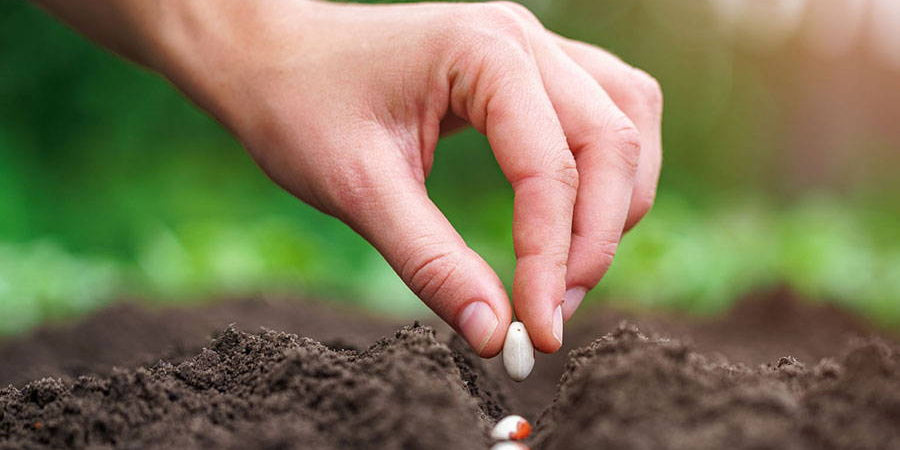Greetings from Lancashire...
November Sowings & Advice

Autumn has truly arrived with cooler temperatures and much shorter days. I hope you have enjoyed good harvests this year – I’ve found that my beans in particular have kept flowering and fruiting well into October. My squash has been slow to get going but produced some tasty fruits in the end.
November Sowings
The Kale ‘Red Ruble’ I sowed last month has already produced a harvest of baby-leaves – which I’ve eaten sprinkled on the soups and omelettes. These small leaves add a peppery crunch to lots of dishes and are full of vitamins. I kept my Lemon Basil on the kitchen windowsill, and it is growing well, but it will take a while before I can start to harvest and use it. I sowed seed straight into a raised bed for my Broad Bean ‘Crimson Flowered’; they have germinated and are growing well.
I’ve sown three different vegetables in my raised beds this month. A week before seed sowing, I cleared the beds of weeds and added chicken manure pellets as a fertiliser. The rain broke up the pellets and just before sowing I raked over the beds and made sure the surface was level and flat.
Mustard ‘Ruby Streaks’ is one of my favourite winter-growing salad crops. I’ve sown it into shallow trenches just 0.5cm deep in a raised bed that gets some sun. Last year it grew throughout the winter and weathered the snow and frosts very well. This year I plan to ‘cut and come’ again – taking a few leaves for my meals but leaving the plant in the ground so it will carry on growing. Its strong peppery taste gives a kick to winter meals, but also puts off slugs and insects!
Pea ‘Meteor’ is another over-wintering vegetable, it won’t produce crops until the spring but sowing the seeds now will get them off to a good start to flower and fruit earlier next year. I made a shallow trench 2.5cm deep and 15cm wide in a raised bed. This gave me space to sow three staggered rows of peas. These are a compact variety that only grow up to 45cm high, so I find that twiggy pea sticks (fine, branching stems from shrubs or trees) make the perfect support.
Lettuce ‘Marvel of Four Seasons’ is a heritage variety that can cope with cold temperatures. So I’m sowing it now for salad leaves I can crop over winter. I’ve sown them as thinly as possible in trenches 1cm deep. As they grow, I’ll thin out the seedlings to leave 15cm between each plant. This will give space for the plants to develop, and I’ll use in the thinnings in a garnish.
Pot Marigold is an excellent, hardy companion plant for vegetables. Its aromatic leaves deter many pests, and it attracts pollinators and aphid-eating insects to my plot. Added to this its orange petals are edible and will brighten up salads and decorate cakes. To get flowers early next year I sow seeds in 9cm diameter pots now and keep them in my unheated greenhouse over winter. You could also put them in a cold frame or sheltered outdoor area. Try not to bring them in the house as it will be too warm, and they will grow ‘leggy’ (develop long, weak stems). In March I’ll plant them outside so they can get established and start flowering in late spring.
Final Thoughts
If you make compost in your garden or allotment this is a good time to turn it over and make sure it is rotting down well. There might be some layers that have decomposed and now have a good crumbly texture – you can use this as a mulch on your vegetable beds. But if you’ve got any large pieces of vegetation that haven’t broken down yet leave them on your compost heap and let them decompose thoroughly before you use them. If your compost has dried out give it a good dowsing with water to help the rotting process.
Read more about Sue's horticultural expertise and projects on her website HERE



